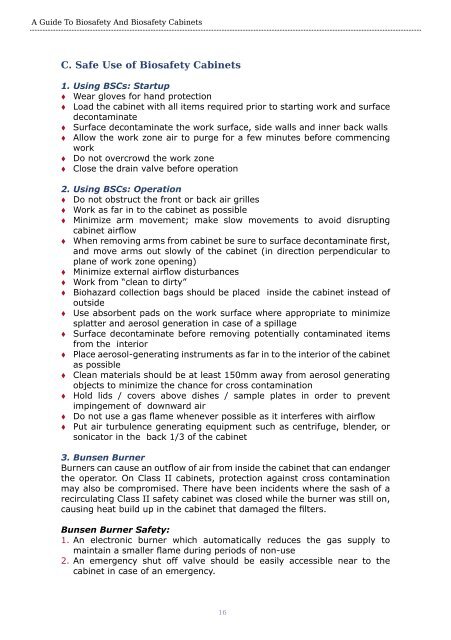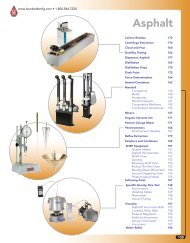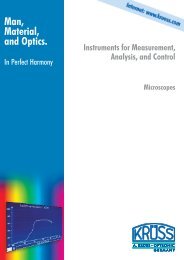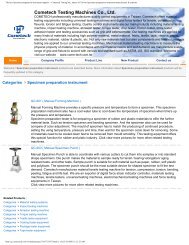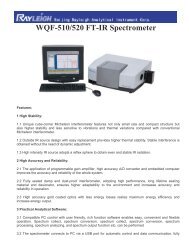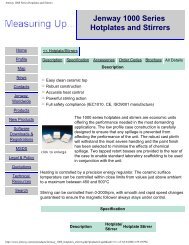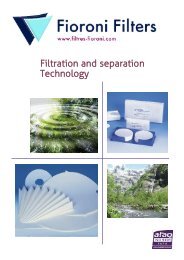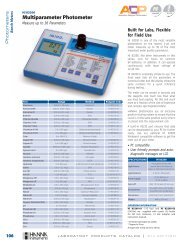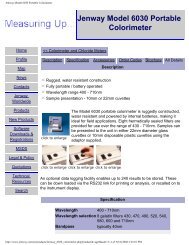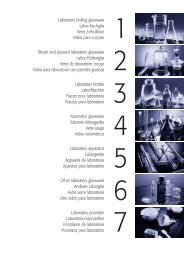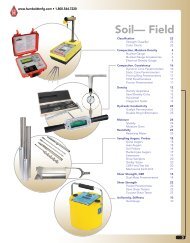Esco Labculture® Plus Class II Type A2 Biosafety Cabinet - Comlibris
Esco Labculture® Plus Class II Type A2 Biosafety Cabinet - Comlibris
Esco Labculture® Plus Class II Type A2 Biosafety Cabinet - Comlibris
Create successful ePaper yourself
Turn your PDF publications into a flip-book with our unique Google optimized e-Paper software.
A Guide To <strong>Biosafety</strong> And <strong>Biosafety</strong> <strong>Cabinet</strong>s<br />
C. Safe Use of <strong>Biosafety</strong> <strong>Cabinet</strong>s<br />
1. Using BSCs: Startup<br />
� Wear gloves for hand protection<br />
� Load the cabinet with all items required prior to starting work and surface<br />
decontaminate<br />
� Surface decontaminate the work surface, side walls and inner back walls<br />
� Allow the work zone air to purge for a few minutes before commencing<br />
work<br />
� Do not overcrowd the work zone<br />
� Close the drain valve before operation<br />
2. Using BSCs: Operation<br />
� Do not obstruct the front or back air grilles<br />
� Work as far in to the cabinet as possible<br />
� Minimize arm movement; make slow movements to avoid disrupting<br />
cabinet airflow<br />
� When removing arms from cabinet be sure to surface decontaminate first,<br />
and move arms out slowly of the cabinet (in direction perpendicular to<br />
plane of work zone opening)<br />
� Minimize external airflow disturbances<br />
� Work from “clean to dirty”<br />
� Biohazard collection bags should be placed inside the cabinet instead of<br />
outside<br />
� Use absorbent pads on the work surface where appropriate to minimize<br />
splatter and aerosol generation in case of a spillage<br />
� Surface decontaminate before removing potentially contaminated items<br />
from the interior<br />
� Place aerosol-generating instruments as far in to the interior of the cabinet<br />
as possible<br />
� Clean materials should be at least 150mm away from aerosol generating<br />
objects to minimize the chance for cross contamination<br />
� Hold lids / covers above dishes / sample plates in order to prevent<br />
impingement of downward air<br />
� Do not use a gas flame whenever possible as it interferes with airflow<br />
� Put air turbulence generating equipment such as centrifuge, blender, or<br />
sonicator in the back 1/3 of the cabinet<br />
3. Bunsen Burner<br />
Burners can cause an outflow of air from inside the cabinet that can endanger<br />
the operator. On <strong>Class</strong> <strong>II</strong> cabinets, protection against cross contamination<br />
may also be compromised. There have been incidents where the sash of a<br />
recirculating <strong>Class</strong> <strong>II</strong> safety cabinet was closed while the burner was still on,<br />
causing heat build up in the cabinet that damaged the filters.<br />
Bunsen Burner Safety:<br />
1. An electronic burner which automatically reduces the gas supply to<br />
maintain a smaller flame during periods of non-use<br />
2.<br />
An emergency shut off valve should be easily accessible near to the<br />
cabinet in case of an emergency.<br />
16


